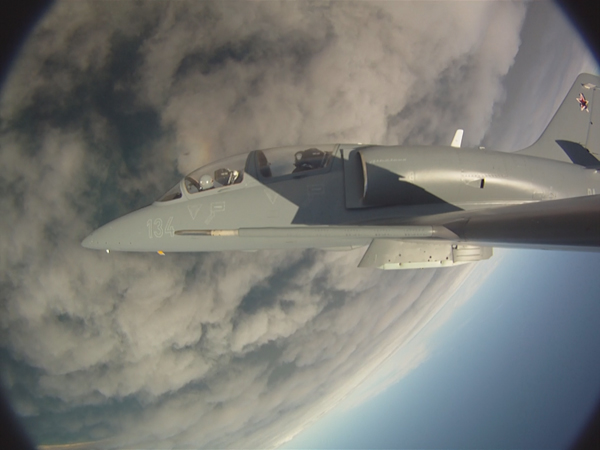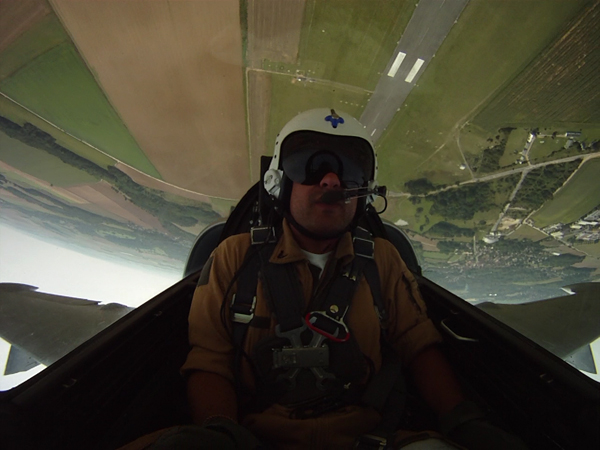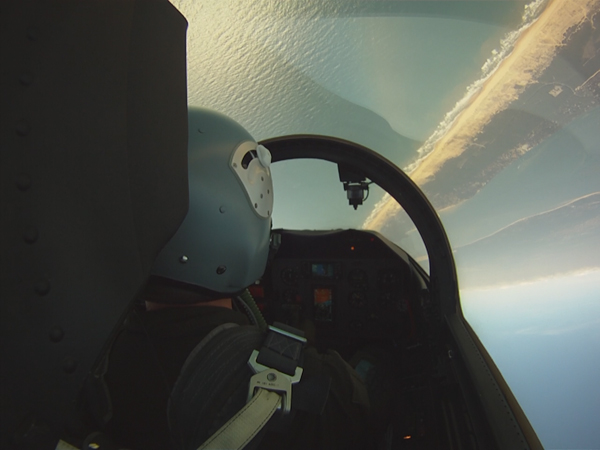The Aero L-39 Albatros is a high-performance jet trainer aircraft developed in Czechoslovakia to meet requirements for a “C-39″ (C for cvičný – trainer) during the 1960s to replace the L-29 Delfín. It was the first of the second-generation jet trainers, and the first turbofan-powered trainer produced, and was later updated as the L-59 Super Albatros and as the L-139 (prototype L-39 with engine Garrett TFE731). The design is still produced in an evolved state as the L-159 ALCA, while more than 2,800 L-39s still serve with over 30 air forces around the world. The Albatros – the most widely used jet trainer in the world – is versatile, seeing duty in light-attack missions as well as in basic and advanced pilot training.

The L-39 (under the name Prototype X-02) first flew on 4 November 1969 and was piloted by Rudolf Duchoň, the factory’s test pilot. Serial production began in 1971. The design is Czechoslovak (Czech) – the construction of Aero’s chief designer Jan Vlček. The L-39 Albatros is a widely flown trainer/light attack aircraft similar in mission to the Italian MB339. Until now is in service with various former Soviet allies.
The low, slightly swept wing has a double-taper planform, 2½-deg dihedral from the roots, a relatively low aspect ratio, and 100 liter (26½ gal US) fuel tankspermanently attached to the wingtips. The trailing edge has double-slotted trailing edge flaps inboard of mass-balanced ailerons; the flaps are separated from the ailerons by small wing fences.

The tall, swept vertical tail has an inset rudder. Variable-incidence horizontal stabilizers with inset elevators are mounted at the base of the rudder and over the exhaust nozzle. Side-by-side airbrakes are located under the fuselage ahead of the wing’s leading edge. Flaps, landing gear, wheel brakes and air brakes are powered by a hydraulic system. Controls are pushrod-actuated and have electrically powered servo tabs on the ailerons and rudder. Operational g-force limits at 4,200 kg (9,259 lb) are +8/-4 g.
A single turbofan engine, an Ivchenko AI-25TL (made in Soviet Union) is embedded in the fuselage and is fed through shoulder-mounted, semi-circular air intakes (fitted with splitter plates) just behind the cockpit; the engine exhausts below the tailplane. Five rubber bag fuel tanks are located in the fuselage behind the cockpit. The main, trailing-arm landing gear legs retract inward into wing bays; the nose gear retracts forward.
A long, pointed nose made of aluminum leads back to the tandem cockpit, in which the student and instructor sit under individual canopies that are hinged on the right. The rear (instructor’s) seat is raised slightly; both ejection seats are made by Aero.

The basic trainer is not armed, but has two underwing pylons for drop tanks and practice weapons. Light-attack variants have four underwing hardpoints for ground attack stores; the ZA also has an underfuselagegun pod.
If you want to fly this jet fighter, contact us. We fly jet fighters in France and the best… you get the controls of the airplane!!!! Try it now, this is a once in a lifetime experience.
